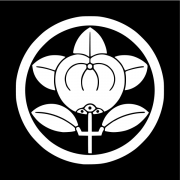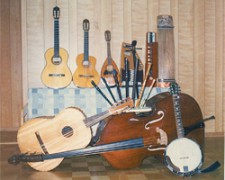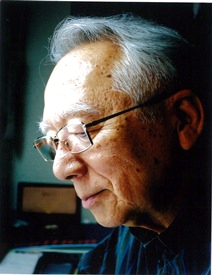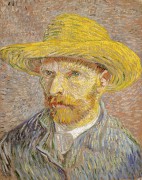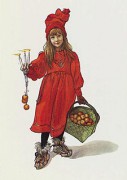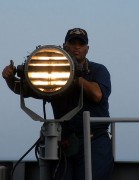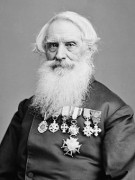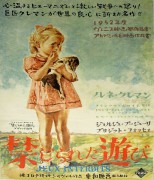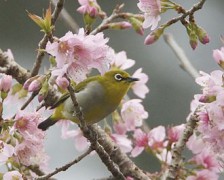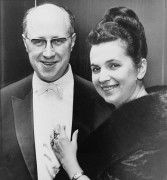- Home
- Tribute の検索結果
Tribute の検索結果: 30 件
パトリック・ヘンリーの言葉「自由を与えよ。然らずんば死を」
パトリック・ヘンリーの言葉「自由を与えよ。然らずんば死を」
Give me liberty, or give me death!
関連記事
“Give me liberty, or give me death!” is a quotation attributed to Patrick Henry from a speech he made to the Second Virginia Convention on March 23, 1775, at St. John’s Church in Richmond, Virginia. Henry is credited with having swung the balance in convincing the convention to pass a resolution delivering Virginian troops for the Revolutionary War. Among the delegates to the convention were future U.S. Presidents Thomas Jefferson and George Washington. (Give me liberty, or give me death! – Wikipedia)
パトリック・ヘンリー(Patrick Henry、1736年5月29日 – 1799年6月6日)は、アメリカ合衆国の弁護士、政治家である。 ヘンリーの最も有名な演説は、1775年3月23日に行われたもので、バージニアはイギリスの支配に異議を唱えるニューイングランド地方の抵抗運動に参加すべきことを訴えて、特に有名な次の発言を演説の結びとした。 Is life so dear, or peace so sweet, as to be purchased at the price of chains and slavery? Forbid it, Almighty God! I know not what course others may take; but as for me, give me liberty or give me death! 鎖と隷属の対価で購われるほど、命は尊く、平和は甘美なものだろうか。全能の神にかけて、断じてそうではない。他の人々がどの道を選ぶのかは知らぬが、私について言えば、私に自由を与えよ。然らずんば死を与えよ。特に最後の最後の「自由を与えよ。然らずんば死を」という発言は歴史に記憶される名文句となった。 (パトリック・ヘンリー – Wikipedia)
関関連エントリ
ツイッター (Twitter)
フェイスブック (Facebook)
日本の作曲家 湯浅譲二 (北海道 美幌町ゆかりの有名人)
日本の作曲家 湯浅譲二 (北海道 美幌町ゆかりの有名人)
関連記事
湯浅譲二 日本の作曲家 / 湯浅 譲二(ゆあさ じょうじ、1929年8月12日 – )は、日本の現代音楽の作曲家。 経歴と作品概論 / 1929年、福島県郡山市にて開業医の次男として生まれる。芸術愛好家だった父の影響で幼時より音楽に親しむ。旧制福島県立安積中学校を卒業したのち上京し、慶應義塾大学医学部に進む。当時は外科医志望であり作曲は趣味として行うつもりだったが東京で日本の現代音楽の状況を知るうちに「このぐらいなら自分でもできる」と思うようになり1951年、「10年間は面倒みてやるから」との父親の合意のもとに医学部教養課程を中退して作曲の道に進む。若い頃、詩人・瀧口修造の下で組織された芸術家グループ・実験工房で武満徹らと共に活動し電子音楽や自作を含む現代音楽の演奏会の製作にかかわった。一方で古典的な作曲理論を身につけておく必要も痛感し、大学教養課程での音楽の担当であった評論家・村田武雄の紹介で中田一次に短期間師事している。 アメリカのカリフォルニア大学サンディエゴ校でブライアン・ファーニホゥ、ロジャー・レイノルズらと共に作曲の教職に就いていた。湯浅が自らの音楽を語る言葉として、次の文句が良く引き合いに出される。「私にとって音楽とは、音響エネルギー体の空間的・時間的推移である」。これはつまり音楽をその音響現象の中に見られるエネルギーの力学的運動として捉えることにより、その音楽の語り口(ナラティヴィティ)を見出そうというものである。このことによって湯浅はジャンルや様式、地域性などを超えたほとんどの音楽がこの言葉によって説明できるとしている。 もう一つ重要な言葉として、「コスモロジー」という言葉も湯浅は多用している。これは個々の人間が持つ個人性、その人の歩んできた歴史背景、学習・経験してきた事柄、さらに地域性、民族性、時代性などを包括する言葉である。これによって個々の作曲家には個性が反映され、作曲家独自のメッセージが生まれると湯浅は解説している。 UPICシステムを用いて制作された音楽作品は宣伝の割には意外なほどにUPIC単体の為に制作されたものに傑作が少ないが、そのような不毛の中で「UPICによる始原への眼差し第一番」はその数少ない中の傑作であるばかりか湯浅音楽の最高峰に位置付けられている。 カリフォルニア大学サンディエゴ校教授、日本大学藝術学部客員教授、東京音楽大学客員教授などを経て、桐朋学園大学特任教授、カリフォルニア大学サンディエゴ校名誉教授、国際現代音楽協会(ISCM)名誉会員。慶應義塾大学アート・センター訪問所員。 主な作品 / 管弦楽曲 室内楽 吹奏楽 マンドリンオーケストラ 雅楽 ピアノ曲電子音楽、ミュジーク・コンクレート、コンピュータ音楽 合唱曲 校歌 童謡 映画音楽、テレビなどの音楽 フォークソング 著作・楽譜 / 受賞・受章など (湯浅譲二 – Wikipedia)
Joji Yuasa (湯浅譲二 Yuasa Jōji, born 12 August 1929) is a Japanese composer of contemporary classical music. Biography / Born in Kōriyama, Fukushima, he is a self-taught composer. He first became interested in music while a pre medical student at Keio University, and in 1952 he joined a young artists’ group Jikken Kobo (Experimental Workshop, 1951 – 1957) in Tokyo, an organization for the exploration of new directions in the arts, including multimedia. Since then, Yuasa has written a wide range of compositions, including orchestral, choral and chamber music, music for theatre, and intermedia, electronic and computer music. His works have been commissioned by the Koussevitzky Music Foundation, Saarland Radio Symphony Orchestra, Helsinki Philharmonic Orchestra, Japan Philharmonic Orchestra, NHK Symphony Orchestra, Canada Council, Suntory Music Foundation, IRCAM and National Endowment for the Arts of the U.S.A. He has received a number of fellowships and awards, from: Japan Society Fellowship (1968–69), Composer in Residence at the Center for Music Experiment UCSD (1976), Berlin Artist Program by DAAD (1976–77), the New South Wales Conservatorium of Music in Sydney (1980), the University of Toronto (1981) and IRCAM (1987), As a guest composer and lecturer, he has contributed to the Festival of the Arts of This Century in Hawaii (1970), New Music Concerts in Toronto (1980), Asian Composers League in Hong Kong (1981), concert tour for Contemporary Music Network by British Arts Council (1981), Asia Pacific Festival in New Zealand (1984), Composers Workshop in Amsterdam (1984), Darmstadt Summer Course for Contemporary Music (1988), Lerchenborg Music Tage (1986, 1988), the Pacific Music Festival in Sapporo (1990), and Music of Japan Today: Tradition and Innovation (Hamilton College, NY – 1992). From 1981 to 1994 he was a music researcher and professor at the University of California, San Diego, where he is currently a professor emeritus. He has also served as a guest professor at the Tokyo College of Music since 1981, a professor at Nihon University since 1993 and an honorary member of ISCM. Yuasa is the recipient of a 1996 Suntory Music Award. (Joji Yuasa – Wikipedia
美幌町 日本の北海道の町 / 美幌町(びほろちょう)は、北海道オホーツク総合振興局管内にある町。 美幌町の有名人 / 美幌町ゆかりの有名人 / 湯浅譲二 ー 日本の作曲家。美幌病院歌または看護学校歌を作曲した。(美幌町 (美幌町ゆかりの有名人) – Wikipedia)
関連動画
湯浅譲二作曲、長田弘作詞 おやすみなさい – YouTube
湯浅譲二:冬の光のファンファーレ~長野オリンピックのための – YouTube
関連エントリ
2019 日本芸術院賞 (日本芸術院) – 美幌音楽人 加藤雅夫
ツイッター (Twitter)
フェイスブック (Facebook)
オランダの画家 フィンセント・ファン・ゴッホ (Vincent van Gogh)
オランダの画家 フィンセント・ファン・ゴッホ (Vincent van Gogh)
関連記事
7月29日 忌日 / 1890年 フィンセント・ファン・ゴッホ (蘭:画家『ひまわり』) <37歳> Vincent Willem van Gogh ピストル自殺 (7月29日 今日は何の日~毎日が記念日~)
7月29日 忌日 / 1890年 – フィンセント・ファン・ゴッホ、画家。 (7月29日 – Wikipedia)
フィンセント・ヴィレム・ファン・ゴッホ(Vincent Willem van Gogh、1853年3月30日 – 1890年7月29日)は、オランダのポスト印象派の画家。主要作品の多くは1886年以降のフランス居住時代、特にアルル時代(1888年 – 1889年5月)とサン=レミでの療養時代(1889年5月 – 1890年5月)に制作された。感情の率直な表現、大胆な色使いで知られ、ポスト印象派を代表する画家である。フォーヴィスムやドイツ表現主義など、20世紀の美術にも大きな影響を及ぼした。なお、オランダ人名のvanはミドルネームではなく姓の一部であるために省略しない。日本を含め多くの国では、これを省略してゴッホという呼び方が定着しているが、本項では正式にファン・ゴッホと呼ぶ。 (フィンセント・ファン・ゴッホ – Wikipedia)
Vincent Willem van Gogh (Dutch: [ˈvɪnsɛnt ˈʋɪləm vɑŋ ˈɣɔx] (About this sound listen); 30 March 1853 – 29 July 1890) was a Dutch Post-Impressionist painter who is among the most famous and influential figures in the history of Western art. In just over a decade he created about 2,100 artworks, including around 860 oil paintings, most of them in the last two years of his life. They include landscapes, still lifes, portraits and self-portraits, and are characterised by bold colours and dramatic, impulsive and expressive brushwork that contributed to the foundations of modern art. His suicide at 37 followed years of mental illness and poverty. (Vincent van Gogh – Wikipedia)
関連エントリ
Vincent van Gogh の検索結果 – 美幌音楽人 加藤雅夫
ツイッター( Twitter)
フェイスブック (Facebook)
韓流(한류 Korean Wave)について
韓流(한류 Korean Wave)について
関連記事
韓流(かんりゅう、ハンりゅう、英: Korean wave)とは、2000年代以降に東アジアで起こった韓国大衆文化の流行。日本では2003年頃から韓国ドラマ『冬のソナタ』放送がきっかけとなった。テレビドラマに限らず、映画、音楽、アイドル、料理、言語、文学など、様々な方面に流行が見られ影響が及んだ。フジサンケイ ビジネスアイでは、「韓流」ビジネスを韓国が「国を挙げたグローバルな拡販政策を展開してきた」と解説している。朝日新聞では、「韓流ブーム」を「『冬のソナタ』に始まり、主役のペ・ヨンジュンが中高年の女性らを中心に熱狂的なファンを生んだ。音楽のKポップは、女性グループのKARA、少女時代が若者らに支持され、紅白歌合戦にも出場した」と解説している。1997年のアジア通貨危機によって韓国がIMF危機という国家的経済危機に陥ると、韓国は経済再建の戦略を立てたが、その一つが文化産業振興であり、韓国内各地の大学に実用音楽科や映像学科、また専門学校も多数設立され、K-POPや韓国ドラマブームの担い手が育つこととなった。日本のテレビドラマの価格上昇や香港映画の衰退などの追い風も受けて、韓国の俳優や音楽など大衆文化に対する人気が高まってブームが形成された。この現象が台湾で「韓流熱風」と言い表され、その後中国や日本でも使われるようになった。「ハンりゅう」という読みはこの「韓流(ハンリュー)」から生まれた。この言葉は韓国に逆輸入された。なお、韓国では、韓流に対応する日本の大衆文化の流行を指す言葉として日流(イルリュ、일류)がある(華語文化圏では哈日という)。また日本で中華文化圏の大衆文化の流行を指す言葉は華流(ファーリュー)と呼ばれる。(韓流 – Wikipedia)
한류 (韓流, 영어: Korean Wave, 스페인어: ola coreana, 말레이어: Gelombang Korea, 터키어: Kore Dalgası, 러시아어: Корейская волна, 독일어: Koreanische Welle, 태국어: กระแสเกาหลี, 타갈로그어: Along Koreano, 베트남어: Làn sóng Hàn Quốc, 우크라이나어: Корейська хвиля)는 대한민국의 대중문화를 포함한 한국과 관련된 것들이 대한민국 이외의 나라에서 인기를 얻는 현상을 뜻한다. ‘한류’라는 단어는 1990년대에 대한민국 문화의 영향력이 타국에서 급성장함에 따라 등장한 신조어이다. 초기 한류는 아시아 지역에서 주로 드라마를 통해 발현되었으며 이후 K-POP으로 분야가 확장되었다. 2010년대에 들어서는 동아시아를 넘어 중동 (북아프리카 포함), 라틴 아메리카 (중남미), 동유럽, 러시아, 중앙아시아 지역으로 넓어졌으며, 최근에는 북아메리카 (북미)와 서유럽 그리고 오세아니아 지역으로 급속히 확산되고 있다. (한류 (문화) – 위키백과, 우리 모두의 백과사전)
The Korean Wave (Hangul: 한류; Hanja: 韓流; RR: Hallyu; MR: Hallyu, About this sound listen , a neologism literally meaning “flow of Korea”) is the increase in global popularity of South Korean culture since the 1990s. First driven by the spread of K-dramas and K-pop across East, South and Southeast Asia during its initial stages, the Korean Wave evolved from a regional development into a global phenomenon, carried by the Internet and social media and the proliferation of K-pop music videos on YouTube. Since the turn of the 21st century, South Korea has emerged as a major exporter of popular culture and tourism, aspects which have become a significant part of its burgeoning economy. The growing popularity of Korean pop culture in many parts of the world has prompted the South Korean government to support its creative industries through subsidies and funding for start-ups, as a form of soft power and in its aim of becoming one of the world’s leading exporters of culture along with Japanese and British culture, a niche that the United States has dominated for nearly a century. During this time, Korean society began to be recognized as developed on par with the Western world. Part of the success of the Korean Wave owes in part to the development of social networking services and online video sharing platforms, which have allowed the Korean entertainment industry to reach a sizeable overseas audience. Use of these media in facilitating promotion, distribution and consumption of various forms of Korean entertainment (and K-pop in particular) has contributed to their surge in worldwide popularity since the mid-2000s. The Korean Wave has become an influential global phenomenon since the start of the 21st century, heavily impacting the contemporary cultures, music industry, film industry, television industry and behavioural aspects of various people throughout the world. (Korean Wave – Wikipedia)
関連サイト
関連エントリ
韓国の魅力を伝えたい(古家 正亨さん、ホミンさん夫妻) ー 美幌音楽人 加藤雅夫
Korean Wave の検索結果 ー 美幌音楽人 加藤雅夫
ツイッター( Twitter)
フェイスブック (Facebook)
Narciso Yepes ナルシソ・イエペス の捧げもの
Narciso Yepes ナルシソ・イエペス の捧げもの
関連記事
Narciso Yepes (14 November 1927 – 3 May 1997) was born into a family of humble origin in Lorca, Region of Murcia. His father gave him his first guitar when he was four years old, and took the boy five miles on a donkey to and from lessons three days a week. Yepes took his first lessons from Jesus Guevara, in Lorca. Later his family moved to Valencia when the Spanish Civil War started in 1936. On 16 December 1947 he made his Madrid début, performing Joaquín Rodrigo’s Concierto de Aranjuez with Ataúlfo Argenta conducting the Spanish National Orchestra. The overwhelming success of this performance brought him renown from critics and public alike. Soon afterwards, he began to tour with Argenta, visiting Switzerland, Italy, Germany, and France. During this time he was largely responsible for the growing popularity of the Concierto de Aranjuez, and made two early recordings, both with Argenta[6] – one in mono with the Madrid Chamber Orchestra (released between 1953 and 1955), and the second in stereo with the Orquesta Nacional de España (recorded in 1957 and released in 1959). On 18 May 1951, as he leant on the parapet of a bridge in Paris and watched the Seine flow by, Yepes unexpectedly heard a voice inside him ask, “What are you doing?” He had been a nonbeliever for 25 years, perfectly content that there was no God or transcendence or afterlife. But that existential question, which he understood as God’s call, changed everything for him. He became a devout Catholic, which he remained for the rest of his life. In 1952 a work (”Romance”), Yepes claims to have written when he was a young boy,[10] became the theme to the film Forbidden Games (Jeux interdits) by René Clément. Despite Yepes’s claims of composing it, the piece (”Romance”) has often been attributed to other authors; indeed published versions exist from before Yepes was even born[citation needed], and the earliest known recording of the work dates from a cylinder from around 1900.[citation needed] In the credits of the film Jeux Interdits, however, “Romance” is credited as “Traditional: arranged – Narciso Yepes.” Yepes also performed other pieces for the Forbidden Games soundtrack. His later credits as film composer include the soundtracks to La Fille aux yeux d’or (1961) and La viuda del capitán Estrada (1991). He also starred as a musician in the 1967 film version of El amor brujo. In Paris he met Maria Szumlakowska, a young Polish philosophy student, the daughter of Marian Szumlakowski, the Ambassador of Poland in Spain from 1935 to 1944. They married in 1958 and had two sons, Juan de la Cruz (deceased), Ignacio Yepes, an orchestral conductor and flautist, and one daughter, Ana Yepes, a dancer and choreographer. In 1964, Yepes performed the Concierto de Aranjuez with the Berlin Philharmonic Orchestra, premièring the ten-string guitar, which he invented in collaboration with the renowned guitar maker José Ramírez III. After 1964, Yepes used the ten-string guitar exclusively, touring all six inhabited continents, performing in recitals as well as with the world’s leading orchestras, giving an average of 130 performances each year. He recorded the Concierto de Aranjuez for the first time with the ten-string guitar in 1969 with Odón Alonso conducting the Orquesta Sinfonica R.T.V. Española. Apart from being a consummate musician, Yepes was also a significant scholar. His research into forgotten manuscripts of the sixteenth and seventeenth centuries resulted in the rediscovery of numerous works for guitar or lute. He was also the first person to record the complete lute works of Bach on period instruments (14-course baroque lute). In addition, through his patient and intensive study of his instrument, Narciso Yepes developed a revolutionary technique and previously unsuspected resources and possibilities. He was granted many official honours including the Gold Medal for Distinction in Arts, conferred by King Juan Carlos I; membership in the Academy of “Alfonso X el Sabio” and an Honorary Doctorate from the University of Murcia. In 1986 he was awarded the Premio Nacional de Música of Spain, and he was elected unanimously to the Real Academia de Bellas Artes de San Fernando. In the 1980s, Yepes formed Trio Yepes with his son Ignacio Yepes on flute and recorder and his daughter Ana dancing to her own choreography. After 1993, Narciso Yepes limited his public appearances due to illness. He gave his last concert on 1 March 1996 in Santander (Spain). He died in Murcia in 1997, after a long battle with lymphoma. (Narciso Yepes – Wikipedia)
ナルシソ・イエペス(Narciso Yepes、1927年11月14日 – 1997年5月3日)はスペインのギタリスト、作曲家。ナルシソ・ジェペスとも表記される。来歴 / スペインのムルシア地方のロルカ近郊の農家に生まれた。4歳の時に初めてギターに触れ、ロルカの音楽アカデミーでギターを学び、その後バレンシア音楽院に進んでギターや作曲を学んだ。ここで、作曲家のビセンテ・アセンシオ教授に大きな影響を受ける。また、マドリード音楽院では、サインス・デ・ラ・マーサにギターを師事した。1947年12月17日スペイン劇場でのスペイン国立管弦楽団の定演コンサートに名指揮者アタウルフォ・アルヘンタにより招かれ、ロドリーゴのアランフエス協奏曲を演奏した。その後に行われたパリやジュネーヴなどでの演奏会の成功で、イエペスの名はヨーロッパ中に知れ渡った。1952年に、パリのカフェで映画監督のルネ・クレマンと偶然知り合い、「映画自体はすでに撮ってあるが、どんな音楽をつけたらよいか決めかねているので、映画のための音楽を担当してほしい」と監督から依頼を受ける。当初、アンドレス・セゴビアに音楽を担当してもらう予定だったが、すでに映画制作の為の予算を使い果たしており、セゴビアとは制作費の折り合いがつかず、当時まだ新人であったイエペスに音楽担当の依頼をする事となった。 そこで、24歳のイエペスは映画『禁じられた遊び』の音楽の編曲・構成、演奏を1本のギターだけで行った。そして、その映画が公開されると、メインテーマ曲「愛のロマンス」が大ヒットし、世界的に有名なギタリストとなった。それから世界各地でリサイタルやオーケストラとの共演を行い、日本にも1960年から1996年までの間に計17回訪問した。1964年からは、ホセ・ラミレス3世と共同で通常より音域の広い10弦ギターを開発した。演奏の軽快さが多少犠牲になり、一部では批判もあったが、均一な共鳴をもつ透明度の高い音色を実現し、多くの音楽愛好家に受け入れられた。1989年4月スペイン芸術院のサン・フェルナンド王立アカデミーの会員に任命された。これはサインス・デラマーサ、アンドレス・セゴビアに続く3人目の栄誉である。1990年頃に、悪性リンパ腫に冒されている事が発覚し、1993年には医師から演奏活動の中止を忠告されたが、その後も演奏活動を続けた。だが、1996年3月にサンタンデール音楽祭に出演したのが最後のステージとなり、1997年5月3日に69歳で死去した。イエペスの信念である「芸術は神のほほえみである」の名のもとに10弦ギターで世界各地を演奏活動して回ったことにより、日本はもとより全世界で圧倒的な人気を誇り、なお且つ世界各地に及ぼした音楽的影響の高さはひときわ抜きん出ていた。レパートリーの広さ(バッハのリュート組曲におけるバロック・リュートの演奏、テレサ・ベルガンサとの歌の伴奏、世界各地のオーケーストラとのギターコンチェルトによる共演、フェルナンド・ソルの練習曲集の演奏、カタルーニャ地方の民謡を集めた曲集の演奏、ラテン系の近代・現代の作曲家の作品の10弦ギターによる演奏、弟子のモンダンとの二重奏、「トリオ・イエペス」による親子の共演等 )も、来日回数も、他の追随を許さぬものがあり、年間120回にもおよぶ演奏会を30年近く世界各地で行い、今までに録音したレコードの枚数も50枚を超えた(1967年から1989年まではドイツ・グラモフォン専属となった)。日本国内での代表的な弟子として、荘村清志、芳志戸幹雄、小原聖子等がいる。イエペスには数々の栄誉が与えられており、代表的なものとしてムルシア大学名誉博士号、イサベル・ラ・カトリカ十字章、スペイン国王から芸術功労金メダル、スペイン文化賞からスペイン音楽大賞、スペイン作曲家協会賞、国営テレビ局大賞等がある。(ナルシソ・イエペス – Wikipedia)
関連サイト
Narciso Yepes Official Homepage (ナルシソ·・イエペス公式ホームページ)
Ana Yepes (アナ・イエペス)| earlydance.org
関連エント
Narciso Yepes の検索結果 ー 美幌音楽人 加藤雅夫
ツイッター( Twitter)
フェイスブック (Facebook)
サミュエル・モールスのモールス符号(エスオーエス SOS)
サミュエル・モールスのモールス符号(エスオーエス SOS)
関連記事
4月27日 誕生日 / 1791年 サミュエル・モールス (米:画家,電信機とモールス符号を発明) Samuel Finley Breese Morse (4月27日 今日は何の日~毎日が記念日~)
サミュエル・フィンリー・ブリース・モールス(Samuel Finley Breese Morse、1791年4月27日 – 1872年4月2日)はアメリカの画家、発明家。モールス電信機を発明し、モールス符号に名を残した。画家としても名を成している。サミュエル・モースとも。(サミュエル・モールス – Wikipedia)
Samuel Finley Breese Morse (April 27, 1791 – April 2, 1872) was an American painter and inventor. After having established his reputation as a portrait painter, in his middle age Morse contributed to the invention of a single-wire telegraph system based on European telegraphs. He was a co-developer of the Morse code and helped to develop the commercial use of telegraphy. (Samuel Morse – Wikipedia)
モールス符号(モールスふごう、英語: Morse code)は、電信で用いられている可変長符号化された文字コードである。モールス符号を使った信号はモールス信号と呼ばれる。概要 / 日本語では、モールス符号の短点を「トン」(あるいは「ト」)、長点を「ツー」と表現することが多いため、俗に「トンツー」とも呼ばれる。短点と長点の組み合わせだけで構成されている単純な符号であることから、修得者は無線通信に限らず音響や発光信号でも会話や通信に活用している(投光・遮光が一挙動で自由に出来て信号を送れる、回光通信機を持つ大型船舶が存在する)。歴史 / アメリカ合衆国の発明家サミュエル・フィンレイ・ブリース・モールスは、1837年9月4日にニューヨーク大学で現在のものと全く異なった符号で電信実験を行い、ジョセフ・ヘンリー(プリンストン大学教授)の指導とアルフレッド・ヴェイルの協力の下、改良した符号と電信機との特許を1840年6月20日に取得した。さらに改良した符号により1844年5月24日に実際の送信実験に成功した。この名称は発明者にちなんだものである。(モールス符号 – Wikipedia)
Morse code is a method of transmitting text information as a series of on-off tones, lights, or clicks that can be directly understood by a skilled listener or observer without special equipment. It is named for Samuel F. B. Morse, an inventor of the telegraph. In an emergency, Morse code can be sent by improvised methods that can be easily “keyed” on and off, making it one of the simplest and most versatile methods of telecommunication. The most common distress signal is SOS – three dots, three dashes, and three dots – internationally recognized by treaty. (Morse code – Wikipedia)
SOS(エスオーエス)は、かつて船舶を中心に用いられていたモールス符号による遭難信号である。現代では遭難に限らず助けを求める合図として使用されることがある。(SOS – ウィキペディア)
SOS is the International Morse code distress signal (▄ ▄ ▄ ▄▄▄ ▄▄▄ ▄▄▄ ▄ ▄ ▄). The SOS distress signal is a continuous sequence of three dots, three dashes, and three dots, with no spaces between the letters (notated by the overbar). In International Morse Code, three dots form the letter S, and three dashes make the letter O, so “S O S” became a way to remember the order of the dots and dashes. In modern terminology, SOS is a Morse “procedural signal” or “prosign”,[3] and the formal way to write it is with a bar above the letters or enclosed in angle brackets: SOS or
関連エントリ
Samuel Morse の検索結果 ー 美幌音楽人 加藤雅夫
ツイッター( Twitter)
フェイスブック (Facebook)
日本初の女性社会主義団体 赤瀾会(Sekirankai)について
日本初の女性社会主義団体 赤瀾会(Sekirankai)について
関連記事
4月24日 歴史 / 1921年 日本初の女性による社会主義団体「赤瀾会」が発足。(4月24日 今日は何の日~毎日が記念日~)
4月24日 できごと / 1921年 – 日本で初の女性による社会主義団体赤瀾会が結成。(4月24日 – Wikipedia)
赤瀾会(せきらんかい、英: The Red Wave Society)は、日本で初の女性による社会主義団体。「赤瀾」とは赤い波(さざなみ)を意味する。名称は、社会主義運動の流れに小さなさざなみ程度は起こせるのではないかということでつけられた。一部のインテリ女性による運動ではなく、労働者階級の女性にも呼びかけをしたのが特徴。さざなみどころか、戦前の日本においての社会主義運動と女性解放運動に大きなうねりを呼び起こす役割を担った。(赤瀾会 – Wikipedia)
The Sekirankai (赤瀾会; Red Wave Society) was a Japanese socialist women’s organization active in 1921. Members of an anarchist group established the organization in April 1921. Prominent feminists Yamakawa Kikue and Noe Itō were advisers for the group, which participated in that year’s May Day activities, published the magazine Omedetashi, held seminars and lectures, ando distributed anti-war leaflets to the army. Their manifesto condemned capitalism, arguing that it turned women into slaves and prostitutes. The Sekirankai was the first women’s socialist association and clashed with Shin Fujin Kyōkai (the New Women’s Association). The organization dissolved eight months after its creation. (Sekirankai – Wikipedia)
関連エントリ
ツイッター( Twitter)
フェイスブック (Facebook)
明日のための音楽 (2011年3月11日の記念)
Music for tomorrow (Memorial of March 11, 2011)
明日のための音楽 (2011年3月11日の記念)
1926年 10月25日、ガリーナ・ヴィシネフスカヤの誕生
1926年 10月25日、ガリーナ・ヴィシネフスカヤの誕生
25 октября 1926, рождение Галина Вишневская
October 25, 1926, the birth of Galina Vishnevskaya
- Home
- Tribute の検索結果










